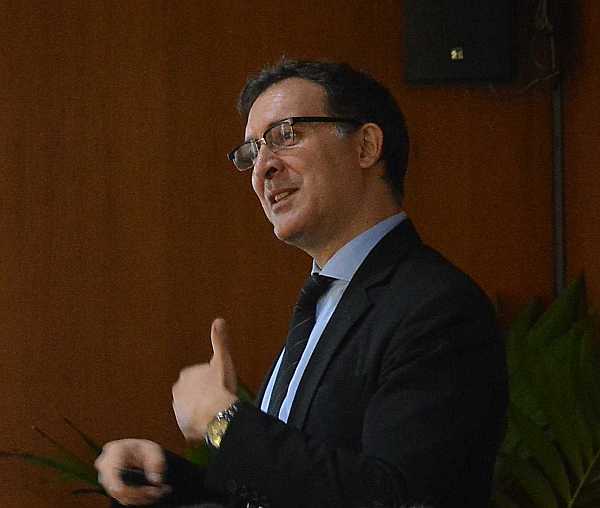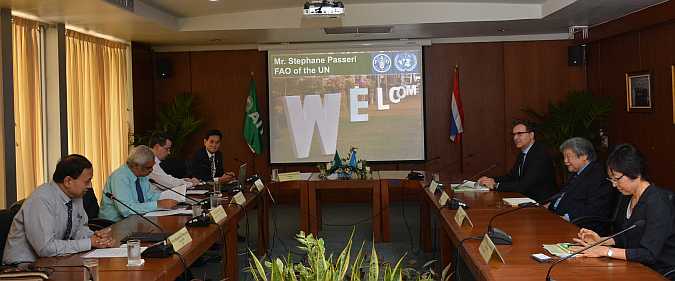
Mr. Stephane Passeri
Have you ever wondered about the original of the coffee you drink, or the food you eat, or the handicraft item your purchase? Is the Doi Tung coffee that you drink genuinely from the Doi Tung hills in Chiang Rai?
A simple method to ascertain the veracity of the product is to look for its Geographical Indication (GI). Explaining the GI concept at the Asian Institute of Technology (AIT) was Mr. Stephane Passeri of the Promotion of Rural Development through Development of Geographical Indications (GI) at Regional Level in Asia, from the Food and Agricultural Organization (FAO).
Speaking at AIT on 13 May 2016, Stephane stated that GIs are specific distinctive intellectual property rights recognized in over 150 countries that focus on the origin of the product, producers know-how, and product names and reputation. Due to natural conditions prevalent at a geographical location, a produced in one geographical location
will always be different from the ones produced in other regions. So the Doi Tung coffee even if produced in another region, would taste different even if it is grown using the same methods and genetic material.
A Geographical Indication is thus a sign used on products that have a specific geographical origin and possess qualities or a reputation that it grains due to its place of origin, Stephane remarked. Moreover, GI products are generally traditional products, with a
connection to the local wisdom and heritage, enabling consumers to make a direct connection between the origin of the product and its quality.
In Southeast Asia, GI’s were adopted by Malaysia in 2000, Indonesia (2001), Thailand (2003), Vietnam (2005-06), and Cambodia (2014). Examples of GI products from Thailand include Khao Hom Mali Thung Kula Rong Hai, Khao Hom Mali Surin, Khao Leuang Patew Chumphon, Khao Jek Chuey Sao Hai, and Sangyod Maung Phatthalung — all rice varieties.
Other examples include Nakonchaisri Pomelo, Chainat Khaotangkwa Pomelo, Phetchabun Sweet Tamarind, Sriracha Pineapple, Phuket Pineapple, Chiangrai Phulae Pineapple, NangLae Pineapple, Kafae Doi Chaang (coffee), Kafae Doi Tung (coffee), and Phurua Plateau Wine. Handicraft examples from Thailand which have acquired GI specifications include Chiang Mai Celadon, Mae Jaem Teen Jok Fabric, as well as Lamphun Brocade Thai Silk.
Stephane was introduced to AIT by Dr. Hiroyuki Konuma, former Assistant Director General and FAO Regional Representatives for Asia and the Pacific, and currently Senior Advisor to the AIT President. At AIT, he met with senior AIT officials where he introduced the concept of Geographical Indications, and discussed opportunities for working together in this field.
Prof. Worsak Kanok-Nukulchai, President, AIT; Prof. Sivanappan Kumar, Vice President for Academic Affairs (VPAA); Prof. Rajendra Shrestha, Dean, School of Environment, Resources and Development (SERD); Prof. Kyoko Kusakabe and Dr. Amararatne Yakupitiyage of SERD; and Mr. Shawn Kelly and Ms. Sumana Shrestha of External
Relations and Communications Office (ERCO) attended the deliberations.

